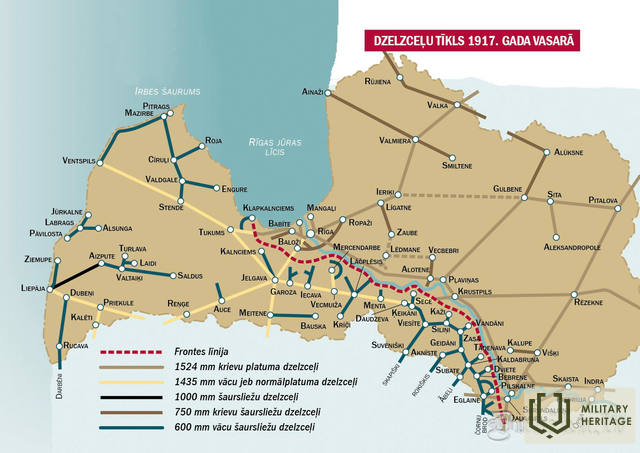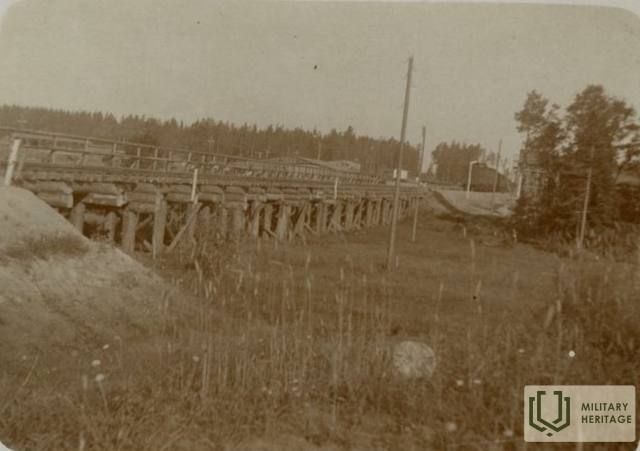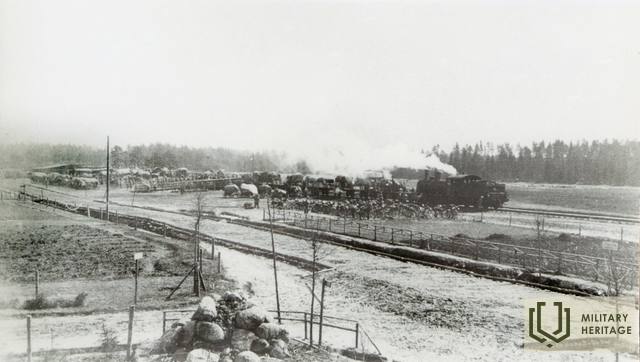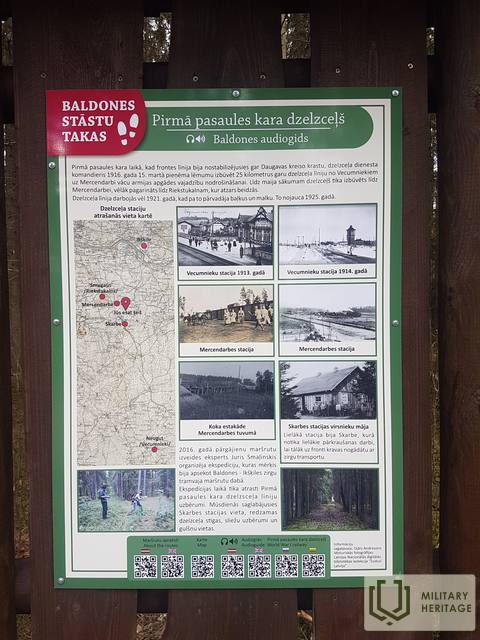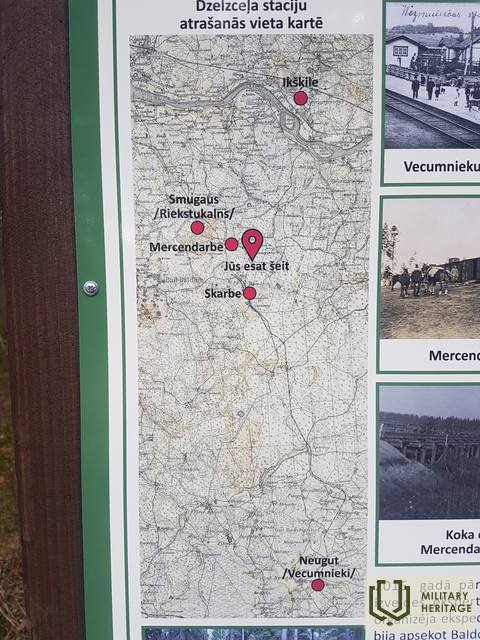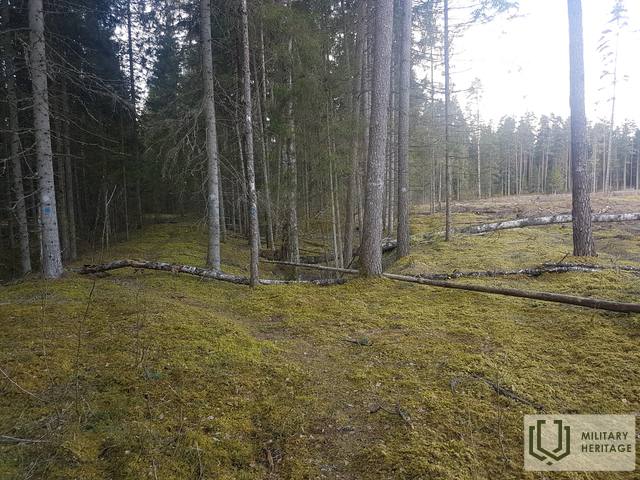Vokietijos karinio geležinkelio atkarpa Mercendarbės-Skarbės maršrute
Infrastruktūra
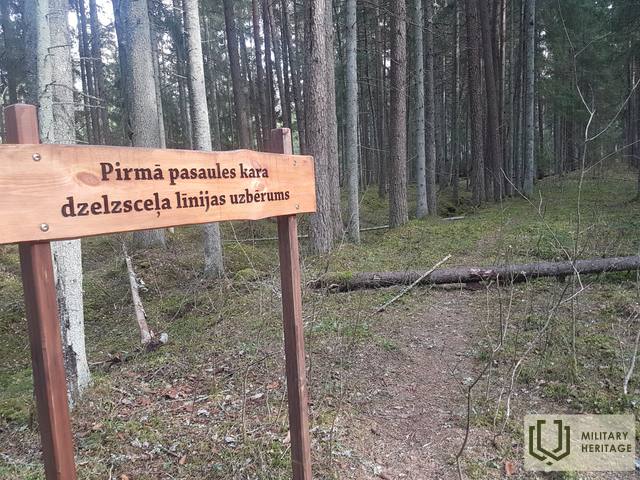

 40
40




Gamtoje aiškiai matomas buvęs geležinkelio maršrutas, nes geležinkelio pylimas išlikęs praktiškai visame kelio ruože, kur šiandien yra miškas. Eidami pylimu atkreipkite dėmesį į žemės dangą – galima pamatyti išlikusias pabėgių vietas. Šiandien kai kurios geležinkelio atkarpos tarnauja kaip kelių pagrindas, pavyzdžiui, miško kirtimo takas. Netoli Mercendarbės dvaro geležinkelio pylimas išlygintas, tačiau netoli Riekstukalns, kur atsinaujina miškas, jis tęsiasi.
Balduonės istorijos tyrinėtojas O. Andersonas apie šio geležinkelio istoriją rašo taip:
„Pirmojo pasaulinio karo metu, kai 1916 m. fronto linija stabilizavosi palei kairįjį Dauguvos upės krantą, siekiant aprūpinti vokiečių armiją, 1916 m. kovo 15 d. armijos geležinkelio tarnybos vadas nusprendė nutiesti liniją iš Vecumniekų į Mencendarbius. Linijos ilgis buvo 25 kilometrai. Kovo 30 d. darbus pradėjo 5000 darbininkų, o iki gegužės 1 d. linija buvo nutiesta iki Skarbės stoties, o iki gegužės 6 d. – iki Mercendarbių. Geležinkelis prasidėjo Vecumniekuose kaip Neugut Kurland stotis, vėliau Nugut Nord, Birsemniek, Gedeng, Skarbės, Merzendorfo stotys (vokiški pavadinimai). Vėliau linija buvo pratęsta iki Riekstu kalno ir iki Vilki kalno priešais Ikškilę. Kadangi Jelgavos–Krustpilio linija jau buvo atstatyta pagal vokišką (Vakarų Europos) vėžę, jos plotis buvo 1435 mm. Tai nebebuvo kažkoks „tiltelis“, o įprastas...“ geležinkelis. Didžiausia stotis buvo Skarbė. Joje taip pat vyko didžiausi krovinių krovos darbai, kad juos būtų galima gabenti į frontą arklių transportu. Geležinkelio linija dar veikė 1921 m., kai ja buvo siunčiami rąstai ir malkos. Ji buvo nugriauta 1925 m. Šiandien stoties vieta išlikusi nepaliesta, galima pamatyti geležinkelio bėgius, bėgių pylimą ir pabėgių vietas. Nuostabu, kad po 100 metų galime vaikščioti šiuo geležinkeliu. Jaučiasi taip, lyg tuoj atvažiuotų traukinys ir tektų pasitraukti.“
Panaudoti šaltiniai ir literatūra:
https://www.baldone.lv/lv/turisms/notikumi/1570_pargajiena_marsruts_skarbes_stacija__mercendarbe__riekstukal/




